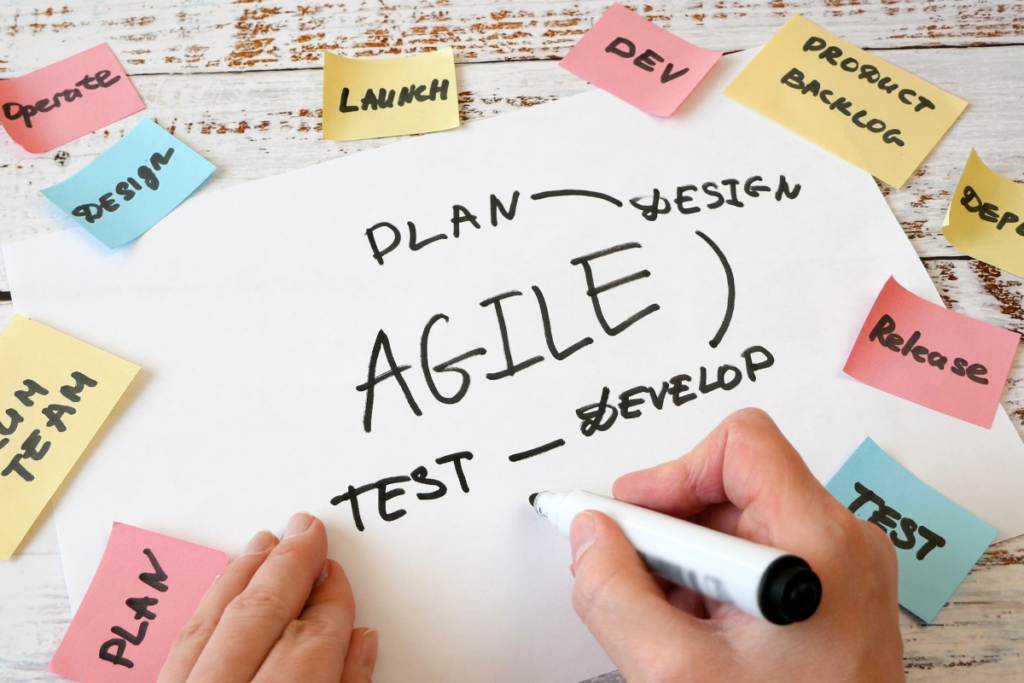Table of Contents
ToggleVarious software development methodologies exist today. These methodologies, like Scrum, Lean, XP, Kanban, etc., use a base philosophy called Agile, which means “able to move quickly and easily”. In today’s business environment, Scrum is the most popular framework used in software development. Scrum applies the Agile philosophy of software development and relies on an iterative approach to a development project.
The project development is handled iteratively with repetitions of steps repeatedly while ensuring flexibility of business and engineering at the same time. Scrum applies a significant number of practices, which have made it a market leader in terms of Software development methodologies. We will discuss the best practices followed in Scrum, which ensures that quality service and the product are delivered to customers.

Scrum Modus Operandi
A Scrum Team, consisting of a Scrum Master, a Product Owner, and the Scrum Software Development Team, which doesn’t exceed seven persons, thereby maintaining “agility”, relies heavily on iterative development. Every project is divided into short repetitions/iterations, aptly named “Sprints”.
Each sprint usually lasts two weeks. In these two weeks, the team develops a component and releases it to the team for meetings and discussion on any changes. These short sprints ensure that the product is designed strictly as per the user’s requirements, and there is enough flexibility to incorporate any end changes that the customer desires or the project requires.
Best Agile Scrum Practices as Follows
1. The Flexibility of Work
Due to the iterative nature of Scrum methodology and recurrent meetings and deliberations over the project, there is an excellent degree of flexibility in product development. Changes can be incorporated as and when the customer feels during the development phase. He only needs to reflect his views in a sprint meeting!
2. Creation of Scrum Artifacts
During the development of the product, a Scrum team creates three primary documents, namely Product backlog– which is the requirement of the customer, Sprint backlog, which consists of items that the team strived to complete within the time frame and the Sprint burndown chart, which is a sort of progress record which allows one to track the actual progress of the project against the target. These artifacts make Scrum versatile in its approach.
3. Nature of Scrum Meetings
There are different types of Scrum meetings, namely, Planning meetings, Daily meetings, Grooming meetings, Sprint demo meetings, and Retrospective meetings. These meetings are goal-oriented, and they don’t impose too many rules. They also allow meetings with the stakeholders periodically. There is scope to discuss the team’s shortcomings too, which helps the team to grow and learn from their mistakes.
4. Scrum: A Team Game
Except for the need to add members with a new skill set, Scrum teams that have been successful in the past are allowed to retain their teams, which encourages camaraderie and greater bonding in the future. Team building techniques like Scrum games and professional practices to encourage collaboration among teammates help strengthen an already motivated team.
5. Inclusive Product Planning
Scrum methodology allows planning the Product backlog in the presence of the customer. This clears a lot of doubts as both parties can hear each other’s perspectives and come to a mutually agreed decision about the product.
6. Power of the Planning Poker
Taking a leaf out of the popular game of poker, the Scrum technique uses a method to select estimates called Planning Poker. This technique allows us to go about planning and estimate-making with a consensus-based approach.
7. Judiciously Planned Sprint time
Scrum focuses on neither stretching nor cutting down on sprint times but on adopting a practice that respects the time frame set. In case of inadequate time, the issue is raised in a retrospective meeting, and any tendency to stretch the time frame is avoided. In case all stories are completed in a designated Sprint, then the Sprint time is utilized in creating small stories, which are added to the scope, which helps to maintain the rhythm.
8. The Ever-convenient Scrum Board
Scrum uses a tool called the Scrum Board, which ensures better visibility of the sprint. It is divided into various columns like Stories, Not Started, In progress, Done, and sometimes as an optional uses columns under the headings Blockers (issues that impede the project), Testing, and Product Owner’s Review. The headings and their purpose are pretty self-explanatory.
- Velocity Measurements– Sprint uses a measurement called Velocity, which is the number of completed stories against the initial estimates.
- Amalgamating Testing and Development– this is a good Scrum practice, which allows good teamwork by ensuring both the Engineering Team and the QA team know and respect each other’s roles so that they complement each other better.
Conclusion
These are some of the many good Scrum practices that have made Scrum almost a Global Leader in the Agile Community. Scrum strives for teamwork and a bottom-up approach rather than a top-down approach, which is reflected in its employee-friendly rules and regulations. This has made Scrum very popular in the industry, and it seems to stay that way for a long. To gain a comprehensive understanding of Scrum and its best practices, participants can enroll in various popular Agile & Scrum Training Programs offered by Spoclearn. Spoclearn delivers some of the widely-recognized Agile and Scrum courses, including Leading SAFe training, CSM training, CSPO training, SAFe POPM training, SAFe Scrum Master training, and others.
